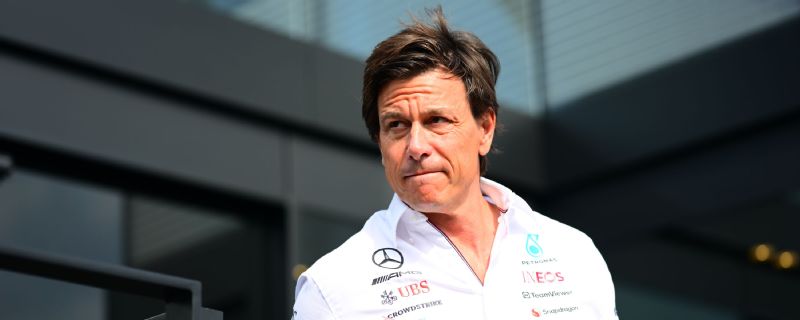In the round-up: George Russell was encouraged by Mercedes’ pace at the Canadian Grand Prix.
In brief
Russell encouraged by Mercedes’ Canada pace
Russell retired from the race due to trouble with his brakes. He was running eighth at the time after clouting a wall hard in the early stages and pitting for repairs. He and team mate Lewis Hamilton started from the second row of the grid.
In the previous round in Spain Russell qualified 12th but rose up the order to take his first podium of the year in third place. His non-score in Canada means he has now dropped to sixth in the standings, but with Hamilton finishing on the podium again he sees signs of progress at Mercedes.
“I think going from Barcelona to here, two quite contrasting circuits, bodes well for the future,” said Russell in Canada after Sunday’s race.
“Of course, as a team, we’re looking for more than just second best. We need to close that gap to Red Bull, but [our pace here] definitely shows we’re on the right path.”
F1 paddock reaches sustainability landmark
Formula 1 has announced that all ten of its teams have now achieved FIA Three-Star Environmental Accreditation, the highest rating possible, making it the first motorsport championship to achieve such a feat.
The FIA’s Environmental Accreditation Programme is now into its 13th year, and uses 17 criteria to assess the environmental sustainability of series, circuits, competitors and manufacturers.
F1 itself received three-star accreditation in 2020, which has now been renewed, and its tyre supplier Pirelli has the highest level of accreditation too. By 2030, F1 plans to be a “net-zero carbon organisation.”
However more than half of the circuits F1 races at do not even have one-star accreditation from the FIA. Five hold three-star accreditation.
FIA shares details on future of junior categories
The second World Motor Sport Council meeting of 2023 took place yesterday in Spain, and among the changes approved were technical details for the single-seater categories below F1.
The next-generation Formula 2 and Formula 3 cars, being introduced in 2024 and 2025 respectively, will now be in use for a minimum of six years rather than three. The tendering process to supply the chassis for either of those has still not been revealed.
Meanwhile the Formula Regional category that sits below F3 has had the introduction of its Gen2 ruleset set for 2025. The choosing of that date had already been expected, and the first-generation cars from three different chassis constructors that have been in use since 2018 will continue to be raced next year. The future Formula Regional cars will have to follow F1 design trends, based on an aerodynamic brief from the FIA.
Advert | Become a RaceFans supporter and
Links
Motor racing links of interest:
‘It’s brought a fresh perspective’: Inside Carpenter’s addition of Hunter-Reay (Indy Star)
“Was there any sort of shouting match or blow-up within the team? ‘No, no, no, not at all,’ Carpenter said.”
Palou is entering rare IndyCar title territory (Racer)
‘At his current rate of production, Alex Palou is all but guaranteed to win his second IndyCar title. Granted, we aren’t handing the Spaniard his second crown in a span of three years quite yet, and there’s still plenty of time for things to go wrong. But on his present trajectory, Palou is flying in territory that hasn’t been explored in 18 years.’
How sports redrew the city (Las Vegas Review Journal)
‘This November, a race on the Strip featuring the globetrotting and suddenly domestically popular F1 will be added to a city calendar already chock-full of major sporting events. It is projected to pump another $1,000,000,000 into city coffers. But ticket and room prices were priced so high that according to news reports, it’s actually cheaper to fly to Monaco to attend the grand prix there.’
Ricciardo wants ‘fairytale’ F1 return to Red Bull (ESPN)
‘Daniel Ricciardo has admitted for the first time during his sabbatical year that the dream end to his Formula One career would be a return to racing for the Red Bull team.’
Column: F1′s predictable races risk turning off new American fanbase (Associated Press)
‘It’s OK to feel duped by F1 and the splashy Netflix show that sucked you into the globetrotting racing series at the height of the pandemic. But here’s F1′s dirty little secret: the racing has never been great and 2021 was an anomaly of a season.’
The man who invented the modern junior single-seater championship (Formula Scout)
‘Dan Partel’s name may be unknown to modern audiences. But junior single-seaters has a lot to thank him for.’
Automobilista 2nd June 2023 development update part one (Reiza Studios)
“One of the major highlights of V1.5 of course is the latest top-to-bottom physics overhaul, courtesy of the tyre findings we commented on in the April Dev Update. The latest V1.4.8 release provided a taste of how significant this revision is, as an initial batch of classes in it already received the revisions.”
“Thanks to the collaboration between KUNOS Simulazioni, 505 Games and Untold Games, on June 27th, console players will have the opportunity to test their skills both in the free updated version of Assetto Corsa Competizione and in the latest DLC.”
FIA announces global research scholarships as part of online abuse campaign (FIA)
‘FIA President Mohammed Ben Sulayem announced today the launch of six scholarships as the FIA’s United Against Online Abuse campaign continues to gather momentum. The scholarships will invite researchers worldwide to collaborate against the global scourge of online hate speech in sport while earning a Masters by Research degree.’
We always endeavour to credit original sources. If you have a tip for a link relating to single-seater motorsport to feature in the next RaceFans round-up please send it to us via the contact form.
Advert | Become a RaceFans supporter and
Happy birthday!
Happy birthday to Jcost!







